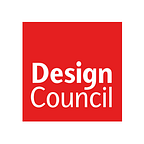One man’s trash is another man’s treasure? A new circular economy for plastic
Every year, 400 million tonnes of plastic is produced globally, and less than 10% of it is recycled. We spoke to specialist, Smile Plastics about how they’re making recycled plastics pretty and their new collaboration with designer and founder of MAKE RELIEF, Will Atkins.
What inspired you?
Our inspiration was first sparked by the work of Danish designer, Tanja Kirst, and more specifically the installation, Planted, which poses the question: “Can oranges, seaweed, pineapple, and hemp, be transformed into textiles without compromising on aesthetics?”
Proving that they certainly can, Kirst created ten unique textile pieces made from organic yarns of the natural materials mentioned above. Using Jacquard weaving, the properties of the different yarns were processed in terms of structure, light reflection, colour saturation and intensity, conveying a geometric abstraction of natural landscapes.
Tell us about the process?
Our panels are 100% recycled and 100% recyclable. They are made from would-be waste, transformed through our unique manufacturing process. We sort our pre-and post-consumer waste plastics by colour, polymer type, grade, and material characteristics, and — like a painter or a whisky blender — selectively combine them to create distinctive surface patterns, ranging from subtle natural stone-inspired to vibrant, maximalist styles.
At this year’s Material Matters, we have worked with designer Will Atkins to create a new form of desk; a curvaceous, cylindrical structure to provide a warm welcome to everyone passing through the fair.
“The brief was to create a desk that was made entirely from plastic, showcasing what is possible. The resulting design used a combination of techniques to not only show off what is mechanically possible with the Heron material but also show how it can be used decoratively. The top surface references the artwork of Tanja Kirst, inlaying large geometric panels of the different Heron colourways to form one seamless surface.
I also designed the desk so that all of the elements can be disassembled, by using mechanical fixings instead of glue. This allows for whole sections to be replaced, different colours or materials swapped in or the whole thing can be taken apart for ease of transport — ensuring a longer and more sustainable lifecycle of the design.” ~ Will Atkins
Why do you think materials matter?
Materials are at the core of everything. Things we wear, use, covet, and hold onto. They have the power to heat, to cool, to heal, to inspire, to soothe…
Choosing the right material can make the difference between a product being briefly used and quickly discarded, or treasured and sustained for decades. The buildings, art and objects that are still around for us to enjoy and learn from are there because of the value of craftsmanship and longevity. These values run through everything we do here at Smile Plastics. As they say, one person’s trash is another’s treasure.
What are the biggest challenges you face when trying to create sustainable designs?
We have been committed to repurposing would-be plastic waste since the 1990s, with our whole value system based on creating a closed-loop material cycle. This not only gives new life to “waste” plastics but allows us to create a product that can be recycled multiple times.
We work with trusted partners to ensure a steady and reliable waste stream, but attaining waste, in large quantities, is not always so straightforward, many relationships have taken years to develop and nurture.
What do you see as the future for plastic?
Every year, 400 million tonnes of plastic is produced globally, and less than 10% of it is recycled. The problem is not the material, but the linear production model and lack of cost-efficient waste management systems.
At Smile Plastics, we want to see an end to single-use plastic, and the global adoption of a circular ecosystem in which all our existing plastic can be infinitely recycled and ‘waste’, as we know it, ceases to exist.
What can other designers do to design for the planet?
Considering a product’s after-life is crucial to achieving circularity in the design industry.
We’re seeing it happen more and more where at events, such as Material Matters at London Design Festival, the entire lifecycle of an installation is thought through so that nothing unnecessarily goes to waste.
Book your ticket now for Material Matters at London Design Festival.
If you want to hear more from Smile Plastics, sign up for your FREE place at our Design for Planet Festival (17–18 October 2023) where they’ll be speaking alongside more than 60 other design experts.
